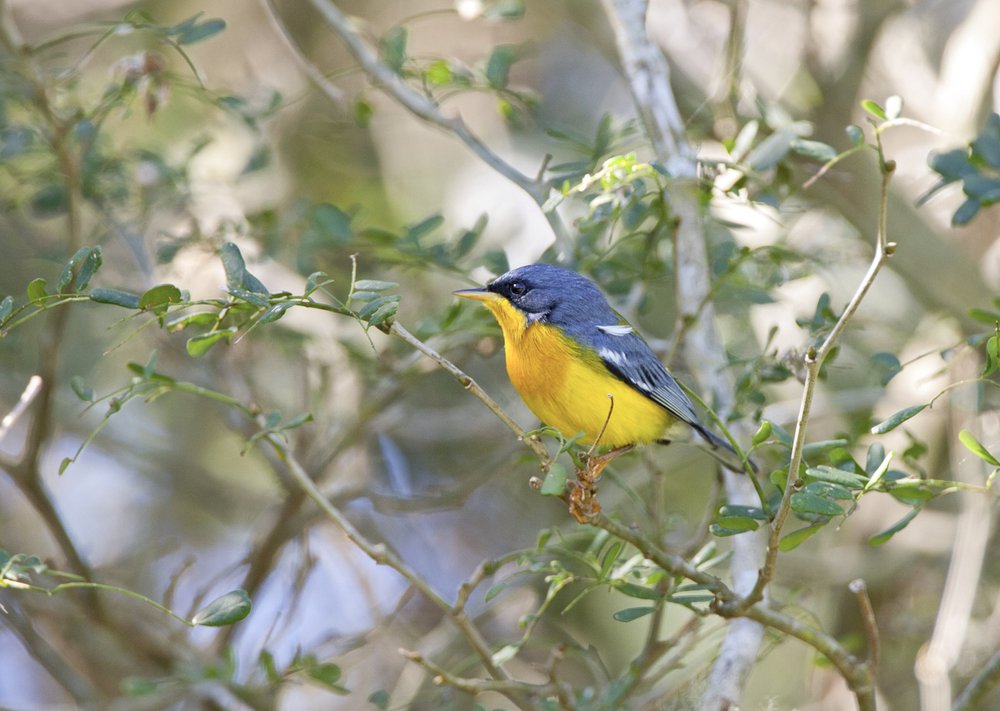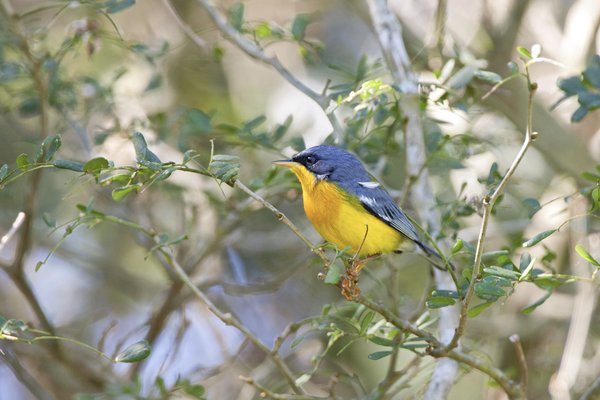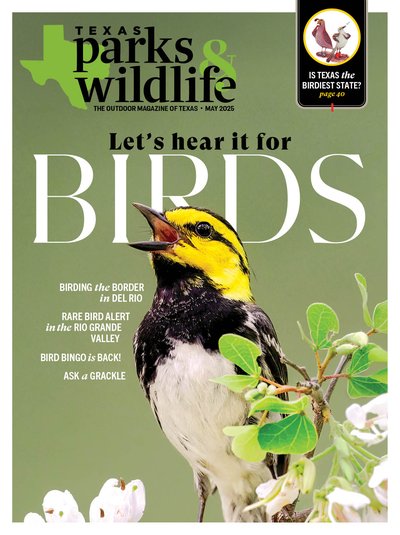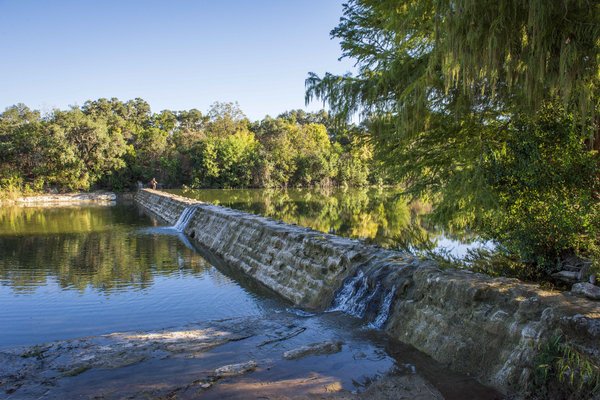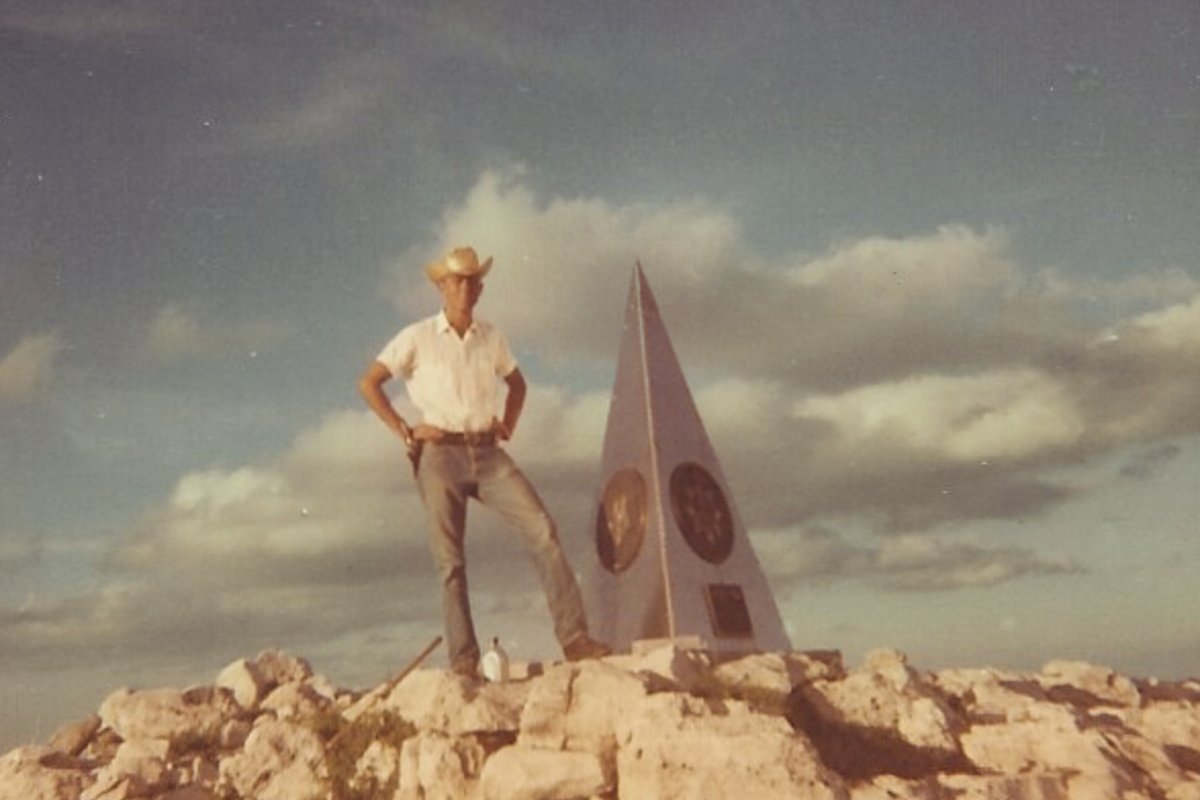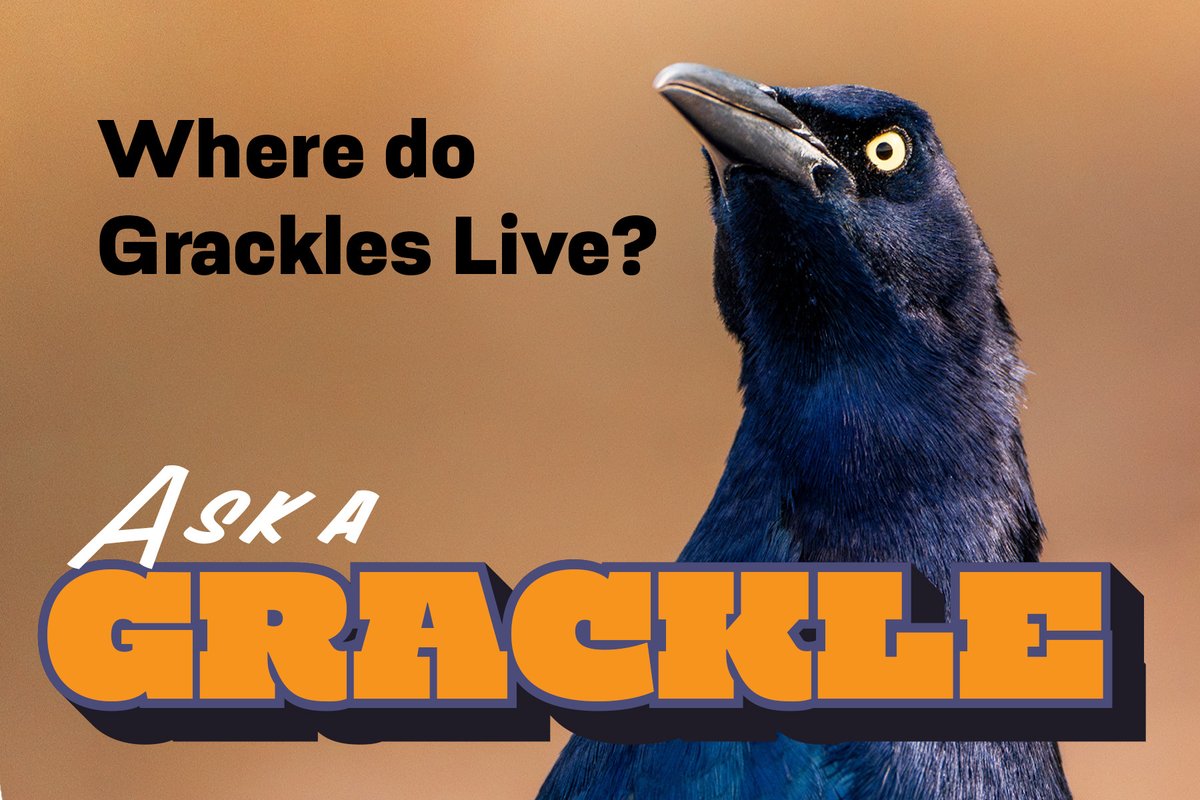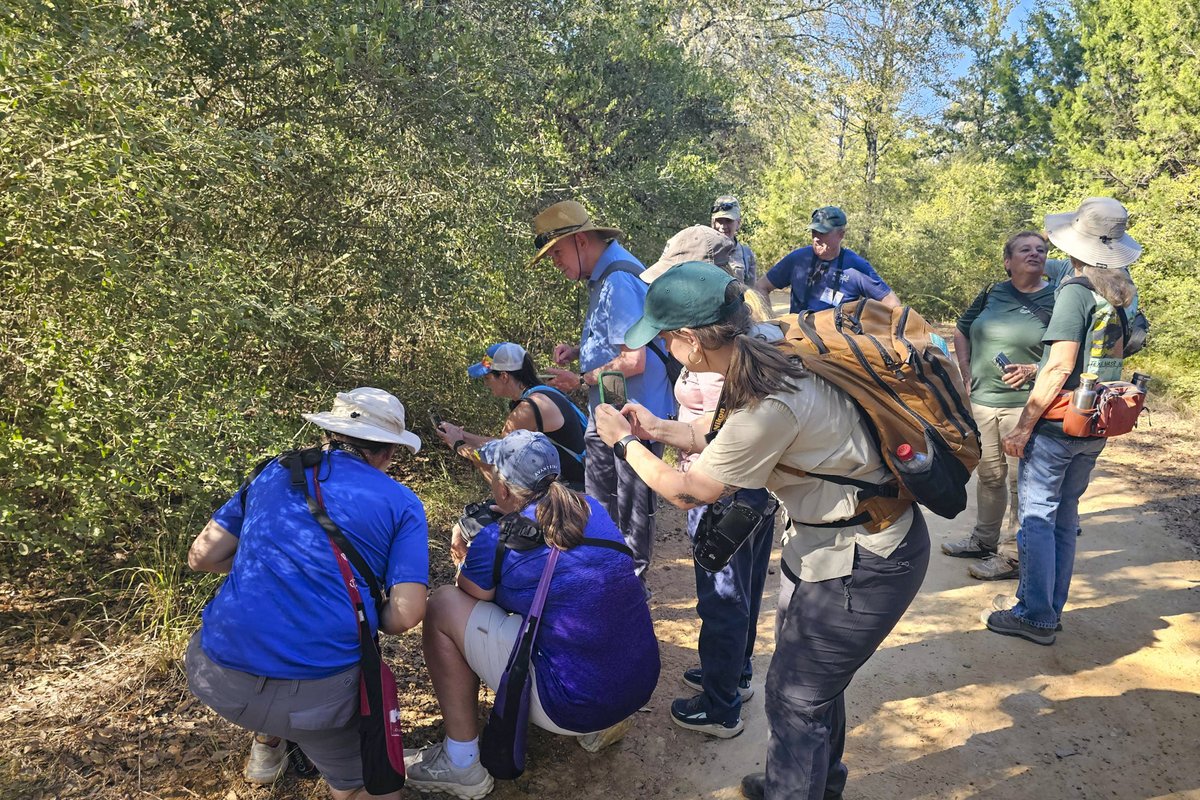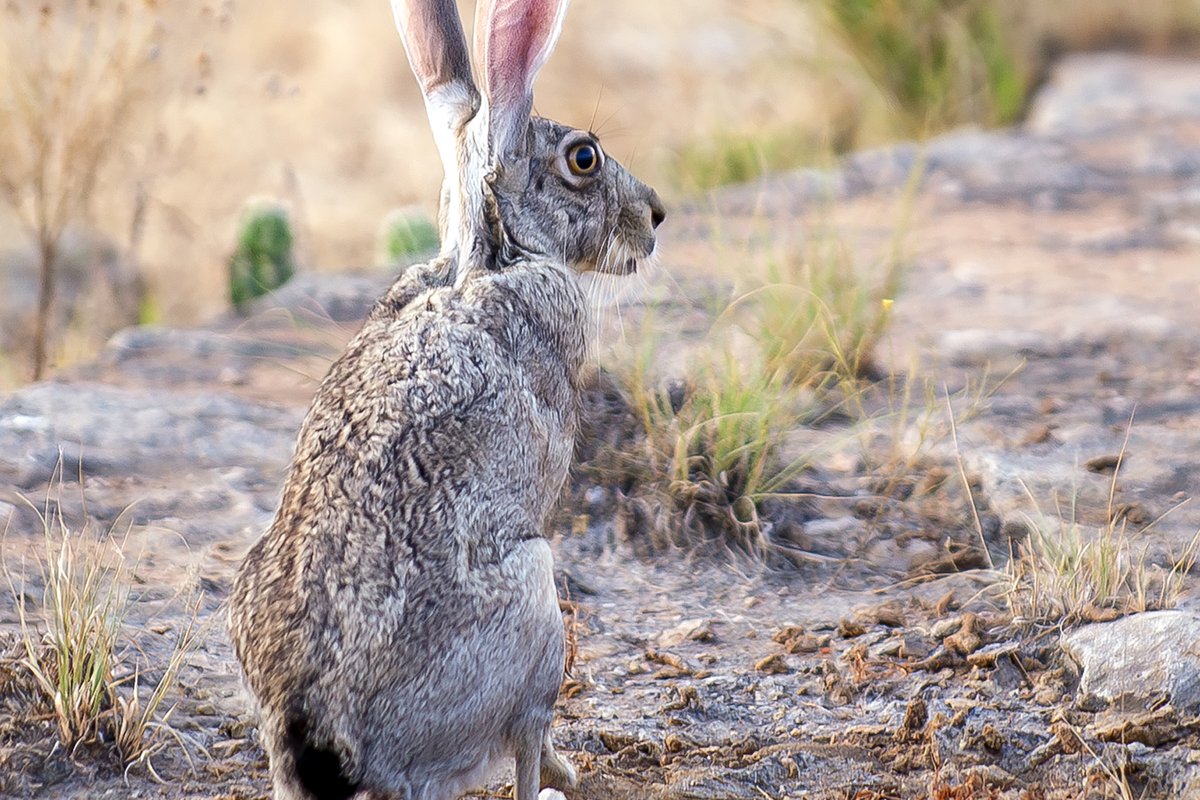Certain movies stoke our outdoor fires.
A River Runs Through It (1992), starring Brad Pitt, made fly fishing popular. Hunger Games' Katniss Everdeen and Brave's Merida (2012) created great interest in the bow and arrow. In 2011, The Big Year lured in millions of new bird-watchers. The familial, hilarious comedy featured two bird enthusiasts, played by Jack Black and Steve Martin, wanting to dethrone the smug world record holder, played by Owen Wilson, from his top perch.
A third of Americans age 16 and over actively head outdoors to bird-watch. They plant gardens and “wildscapes” and erect bird feeders, houses, and water and food stations outside their homes and at local parks and sanctuaries. They scribble names of birds on park boards and post photos at social media sites. Birders collectively spend billions of dollars annually.
The avid among them don binoculars, cameras, spotting scopes, backpacks and vests to pursue the colorful, artful flyers of the skies, flutterers of the trees and underbrush, and swimmers and waders of the waterways. Birders go by foot, bike, car and plane - sometimes traveling hundreds and even thousands of miles in search of the rarest of the birds. Some, perhaps the lucky ones, spend time each day watching birds!
Today's birders have one distinct advantage over those who revolutionized bird-watching over the last half-century - a charged, handheld cellular device. Cell phone apps such as Merlin carry thousands of bird names, photos, calls, guides, ranges, etc. - up-to-date listings of birds from throughout the United States and beyond. Today's birders subscribe to “rare bird alerts” and employ citizen-monitor apps such as eBird (www.ebird.org), a free, crowdsourced database of birds watched worldwide. The site gives the birding community a way to communicate exact locations of birds in real-time.
My brother, Tom, is a passionate bird-watcher and has run the Christmas Bird Count in Fort Collins, Colorado, for over a decade. He is a wildlife biologist and a longtime employee of the Animal and Plant Health Inspection Service (APHIS). He is into chasing rare birds. He came to visit so we could go to South Texas in search of elusive regional specialties. South Texas is the geographical pipeline through which millions of neotropical birds migrate between North America and South America each spring and fall. The Rio Grande Valley is home to the World Birding Center, a network of nine unique birding sites. This is why Texas garners so much attention from top birders throughout the world.
Tom wanted to see 12 of the rare birds featured on eBird in March 2024 to add to his extensive North American bird list. After three days in Texas, he added seven, so it was a fruitful adventure. He added two more birds to include as U.S. sightings — monk parakeet and whooping crane.
Tom is my Owen Wilson. I'm more of his Steve Martin!
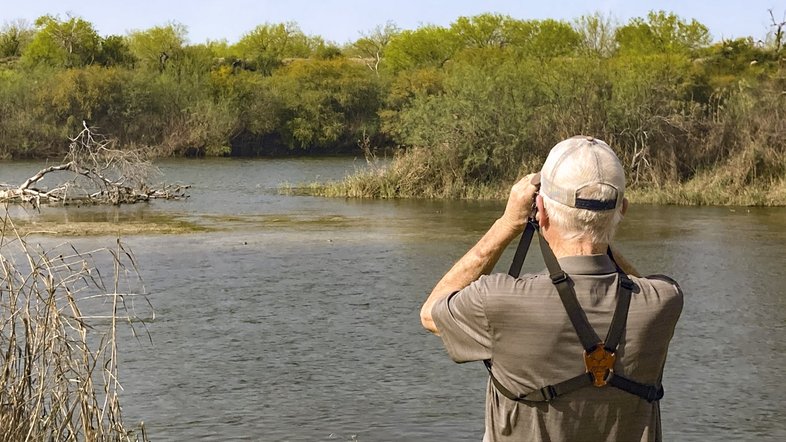
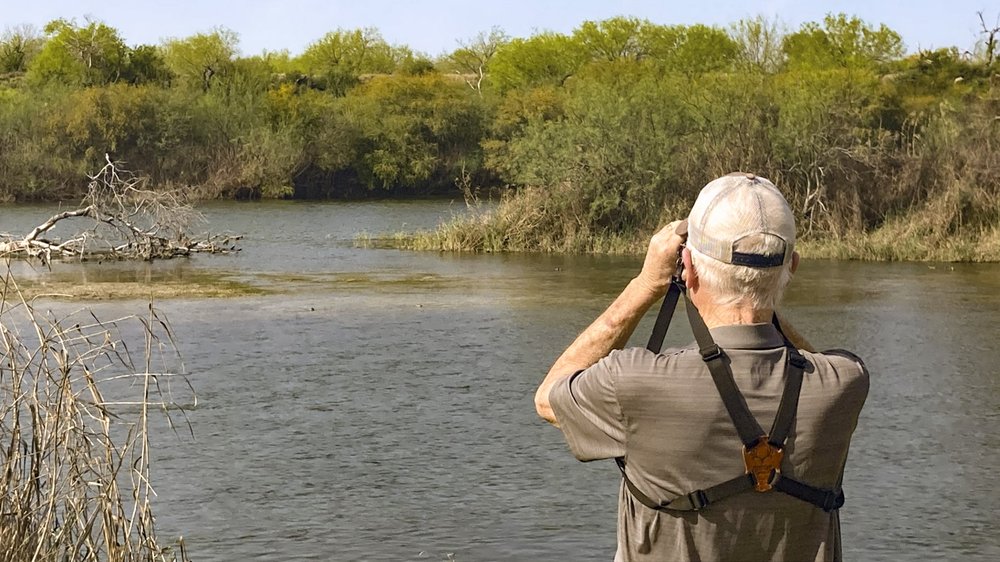
The author's brother Tom along the Rio Grande.
The author's brother Tom along the Rio Grande.
During our Texas rare birds adventure, we met birders from throughout the world:
John, from Colorado, said we just missed the cattle tyrant by seven minutes as we arrived at the Corpus Christi downtown T-head jetty park. John had to scoot back to the San Antonio airport, but Tom's persistence, staying until the next morning, paid off. The seemingly proud rascal walked right up to him near the jetty welcome sign. Welcome, indeed!
Beth, from Tennessee, was our lucky charm in Tom's first sighting of a gray-collared becard behind the Resaca de la Palma State Park visitor center on the tram trail. Related to another rare Valley bird, the rose-throated becard, this grayer cousin had been seen at the park for several months. Tom circled back around to the front of the center and heard another bird he needed, a tropical parula. Despite quick maneuvers, he heard it but didn't see it.
Bob and Elaine, from Virginia, and their two dogs were with us as we first spotted the roadside hawk in a dry resaca along the same tram trail, yards away from where we saw the becard. State Park Police Officer Javon Marquez predicted, “You should see him sitting on a stump in the middle of the resaca at 5 o'clock.” Good advice, Javon!
Ruben, from Brownsville, a local Texas Parks and Wildlife hunter education instructor, avid angler, outdoor leader and bird-watcher, joined Tom and me as we walked around the University of Texas-Rio Grande Valley campus. Beth and other patient bird-watchers were there, too, staring for hours at a small opening in the dense thicket. It was where a fan-tailed warbler was spotted the day before. Despite hearing its call three times, Tom was not able to focus his binocs on the warbler.
Brook, from San Antonio, was first to spot the crimson-collared grosbeak, as Beth and several of us sat at a bird (and javelina) station at La Frontera Audubon in Weslaco. Two van loads of the Oregon Birding Alliance saw the grosbeak earlier, two minutes before we got to their trail location. But we stuck around. “High-five, Brook!” motioned Tom.
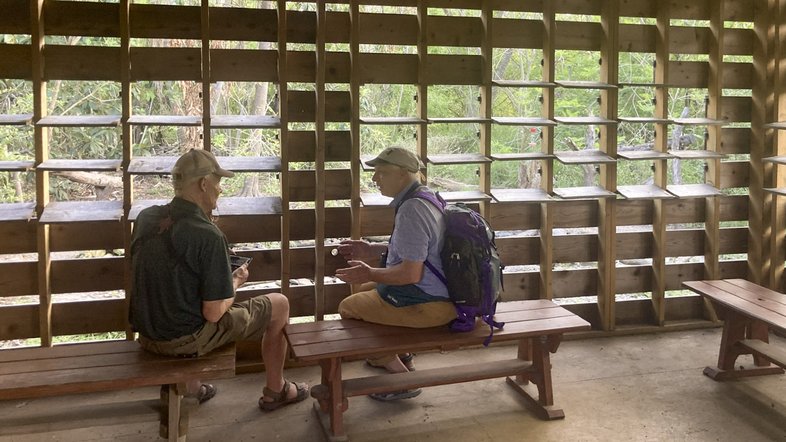
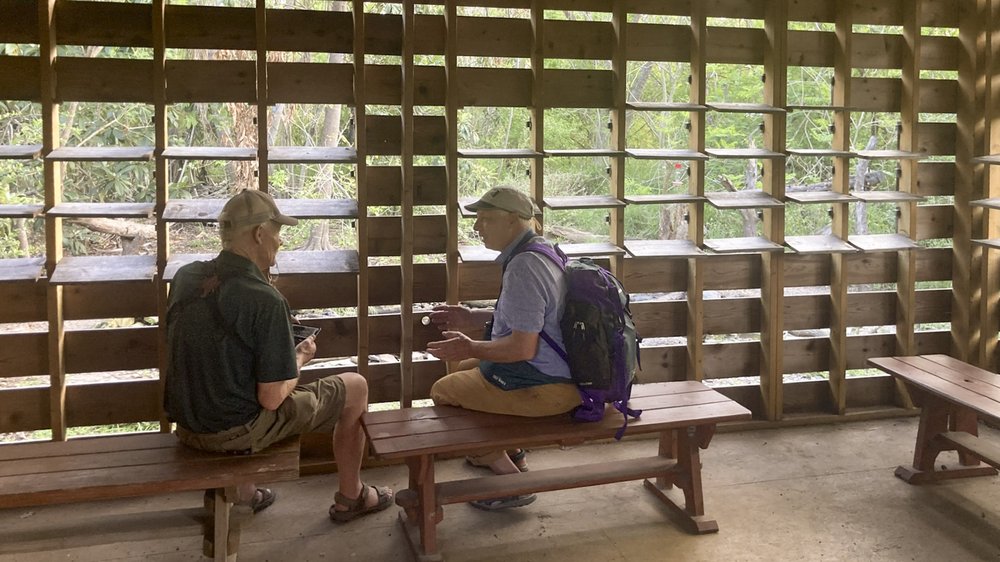
Tom and Ranier compare notes in the bird blind at Estero Llano Grande State Park.
Tom and Ranier compare notes in the bird blind at Estero Llano Grande State Park.
Rainer, a nice chap from Germany, approached us at Estero Llano Grande State Park, asking us if we'd seen a “parak” (common pauraque). Tom replied “no” but offered to tour Rainer around and see if he could help the German see or hear the bird. I circled back up to the spy blind to sit comfortably while watching a water feature - a valuable site in South Texas.
JD, from Michigan's Upper Peninsula, was at the Salineño Wildlife Preserve boat ramp after Tom excitedly spotted a Morelet's seedeater perched in some cane along the bank of the Rio Grande. Then, as we gazed at gray hawks, osprey and vultures in the sky above, Tom whispered, “Wait, is that a crane hawk?” JD and I shrugged. We all three studied the bird flying next to another buteo. JD took a photo and said he would contact me later if he got confirmation that it was indeed the rare “blackish hawk.” We chatted all things birds for an hour at the boat ramp while studying the sky and Rio Grande trees for the elusive hawk.
